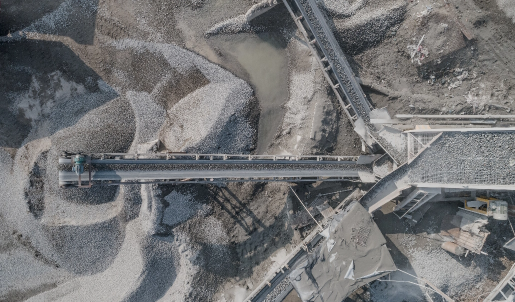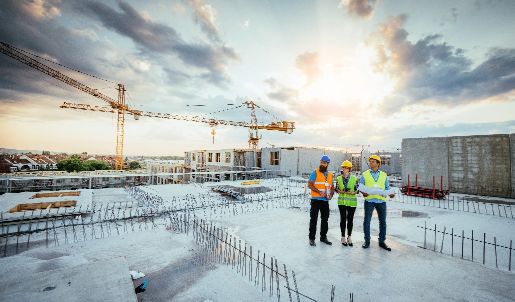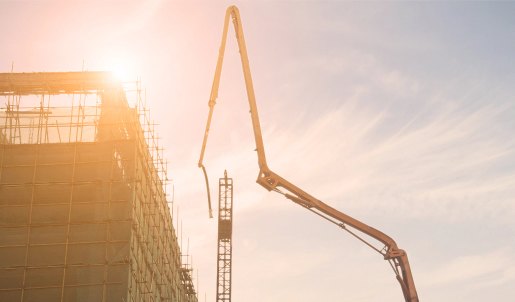SUSTAINABILITY and concrete
OUR VISION for sustainability
“Our vision is to lead the concrete industry towards a sustainable future by promoting responsible resource management and manufacturing practices that minimize our environmental impact. We strive to continuously improve the sustainability of concrete products and processes, while fostering economic growth and social well-being for all stakeholders. Our commitment to sustainability includes reducing carbon emissions, conserving natural resources, and promoting circular economy principles. By working together with our members and partners, we aim to build a resilient and prosperous future for the concrete industry and the communities we serve.”
A United Goal – Reducing Carbon Emissions to Net-Zero By 2050

How? Ten Ways to Reduce Concrete’s Carbon Footprint
Communicate carbon reduction goals – One of the basic tenets of achieving a goal is to effectively communicate that goal to everyone on the team. For concrete, that is especially important because there are so many parameters and criteria for concrete mixtures that the goal of reducing embodied carbon may get lost in the clutter.


Ensure good quality control and assurance – This is important for all products, but it’s especially critical for concrete. Concrete is made from local materials and its performance can be affected by weather conditions, variability of materials, delivery, placing, handling, and testing. Although the materials used to make concrete meet rigorous standards, the variability can be quite high.
Quality Control– Almost all concrete has compressive strength as one performance criterion. Concrete producers design concrete mixtures to meet the needs of the contractor in terms of workability (flowability, pumpability, finishability, etc.) based on their local aggregates, and then using sufficient quantities of cementitious materials—usually a combination of portland cement and supplementary cementitious materials.
Quality Assurance– Testing concrete is not an exact science. Every project has specifications that require independent testing laboratories to ensure that concrete meets the specified performance criteria. Placing concrete is a dynamic process and thus sampling concrete for testing can be challenging. There are well-established procedures for taking concrete samples, preparing test specimens, storing them on site, transporting them to a laboratory, and finally testing them in a compression testing machine or other apparatus.

Optimize concrete design – This strategy is about employing good design practices. Use life cycle analysis software to quickly calculate the embodied carbon of concrete elements (structural or architectural). Consider exposing concrete wherever possible. Finished materials have a considerable carbon footprint, and since exposed concrete can be attractive and is fire resistant without the need for additional protection, this is an excellent strategy for reducing the carbon footprint of the building.

Specify innovative cements – There are several alternatives to ordinary portland cement (OPC), but the most common are called blended cements. These combine OPC with other materials. The most common type of blended cement is portland- limestone cement (PLC) or, technically, ASTM C595 Type IL (pronounced “one el”) cement. This blended cement combines up to 15% limestone interground with OPC to make a cement with a carbon footprint that is up to 10% lower than OPC with performance that is identical to—and in some cases better than—OPC.


Specify supplementary cementitious materials (SCMs)– Nearly all concrete used today has some amount of supplementary cementitious material. The most common are fly ash, slag cement, and silica fume, listed in order from most common to least. However, there are others such as metakaolin, volcanic ash, rice husk ash, and ground glass pozzolan, just to name a few. All enhance the performance of concrete when combined with portland cement, including increased strength, increased durability, and enhanced workability. SCMs offer the greatest opportunity for the reduction of carbon footprint today.
Specify admixtures– Nearly every concrete made today uses some sort of admixture. Most affect the plastic properties in order to make concrete more workable, economical, shorten or lengthen set time, and so on. Without admixtures, concrete could not be pumped hundreds of feet into the air or transported hundreds of miles, and many architectural finishes could not be achieved.
Set targets for carbon footprint– The best approach is to use a whole building life cycle assessment to set a carbon budget for all the concrete on the building. It is still necessary to have a general idea of what the carbon footprint of each mix will be to set a carbon budget for the building.


Don’t limit ingredients– All too often, there are seemingly random limits on material ingredients in project specifications that limit the concrete producer’s ability to meet performance criteria, let alone reduce carbon footprint. Having unnecessary limits on the water to cementitious materials ratio (w/cm) is one example. The same is true for air content. There are concretes that must be air entrained, but that is based on the exposure class of the concrete; mainly for concrete exposed to freezing and thawing. Calling out the exposure class for each concrete application or class of concrete on the project will invoke the necessary air content requirements. Do not list a maximum or minimum cement content, maximum or minimum SCM content, or quantity of admixtures. Do not limit water used for making concrete to potable water (there is an ASTM specification for water used to make concrete). Do not limit the aggregate gradation but do limit the maximum aggregate size based on rebar spacing and member dimensions.
Sequester carbon dioxide in concrete– Like most man-made materials, concrete is considered a CO2 emitter, mainly due to the cement manufacturing process. However, that process can be reversed: CO2 can be captured or sequestered in concrete through natural processes or carbon capture technologies.
Encourage innovation– For an innovative product or process to be successful, demand must be created, but the current design-bid-build process discourages innovation. However, there are some things that can be done to help create demand for innovative products.
More information:
MIT Concrete Sustainability Hub – Concrete and infrastructure science, engineering, and economics.
Environmental Product Declarations – NRMCA
Top10WaysReduceConcreteCarbonFootprint.pdf (nrmca.org)
Infrastructure Investment and Jobs Act (IIJA) (fdot.gov)
USGBC Florida | U.S. Green Building Council
Shaped – by concrete (shapedbyconcrete.com)
pca_roadmap-to-carbon-neutrality_jan-2022.pdf (cement.org)
PCA-EPD1-PORTLAND.indd (cement.org)
Resilient Florida Program | Florida Department of Environmental Protection